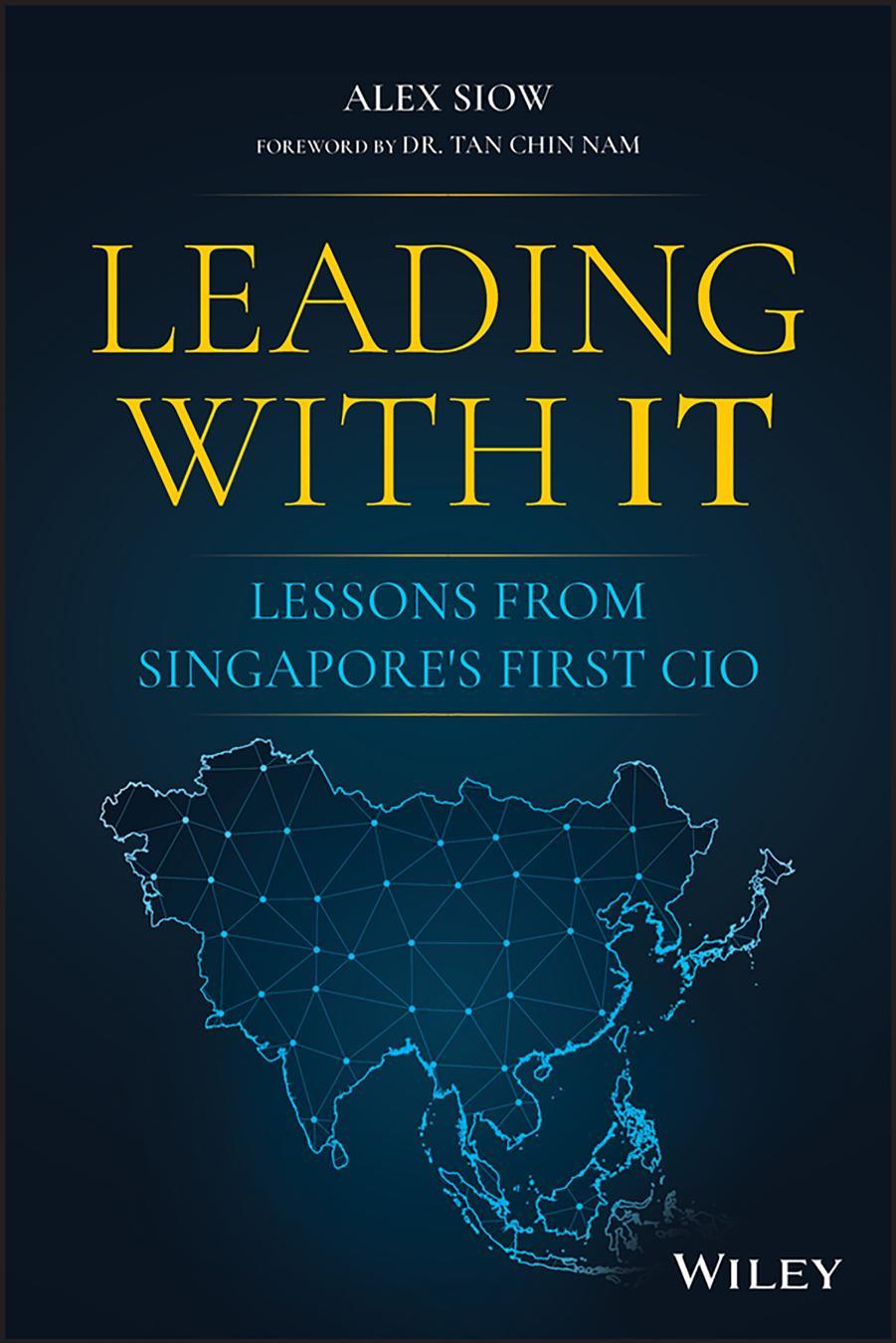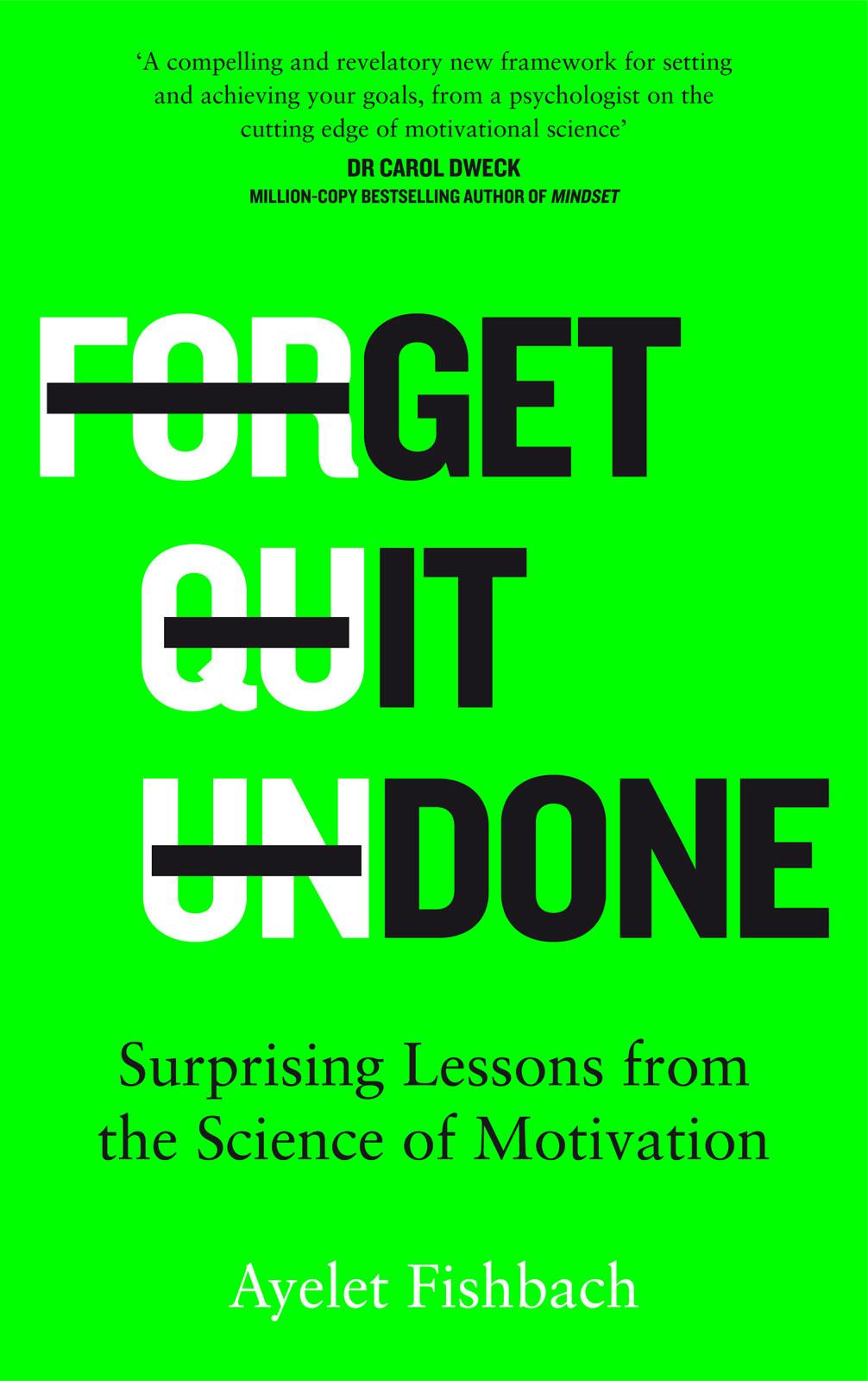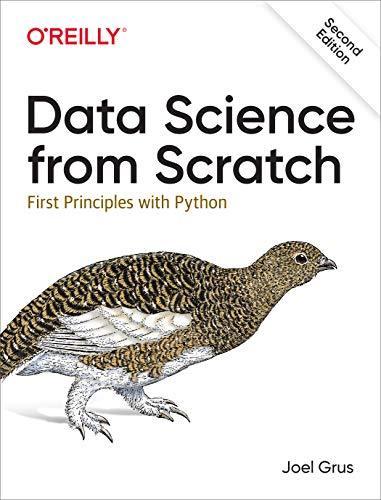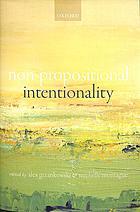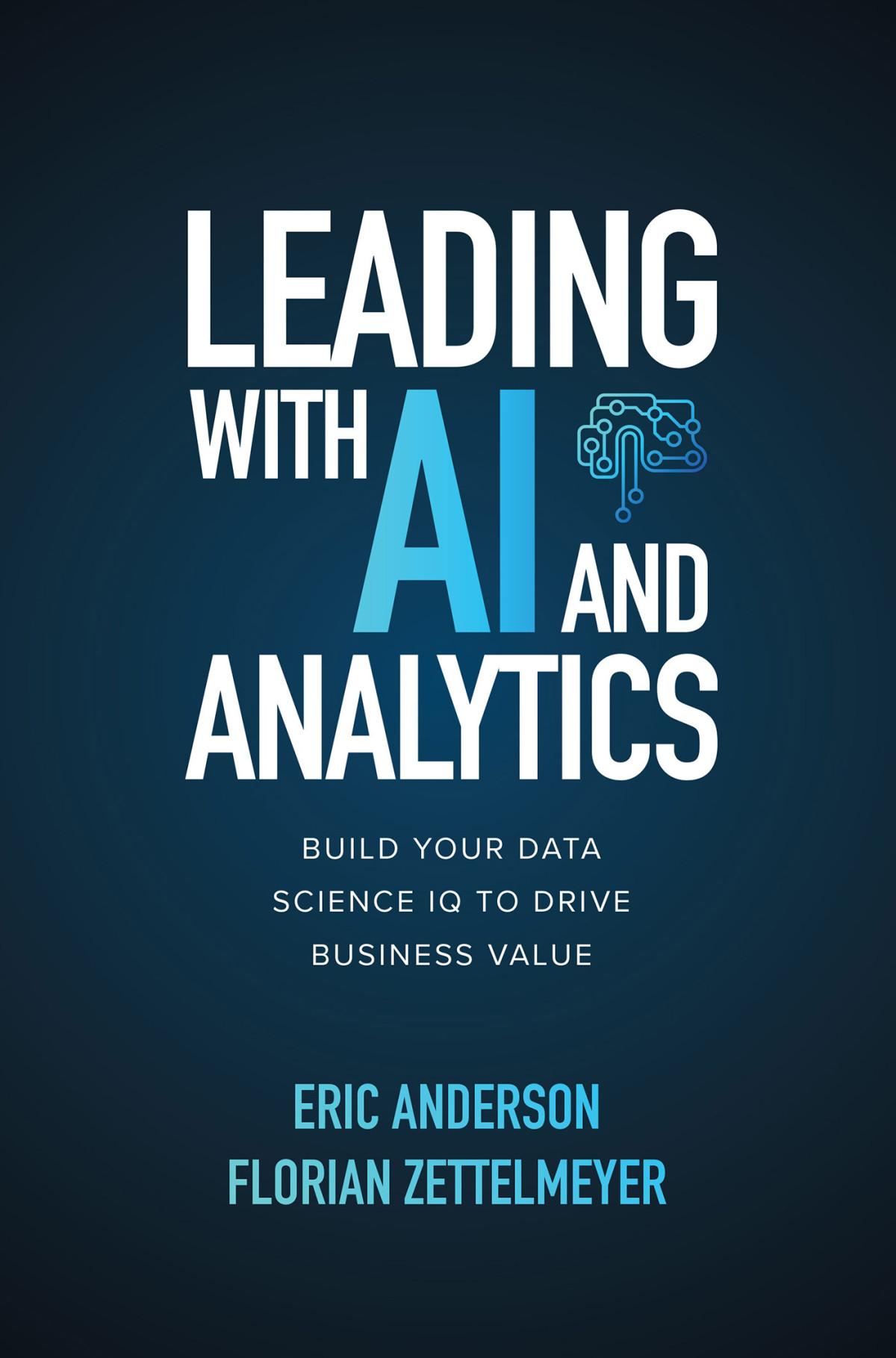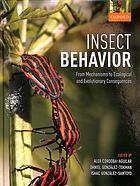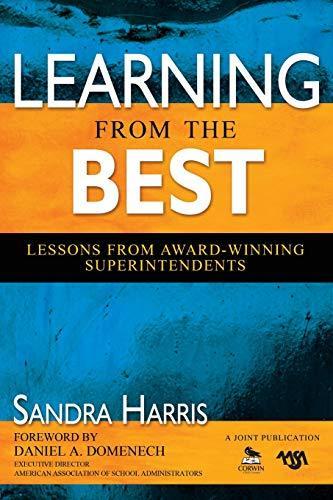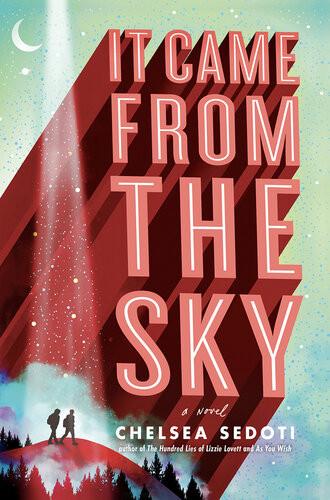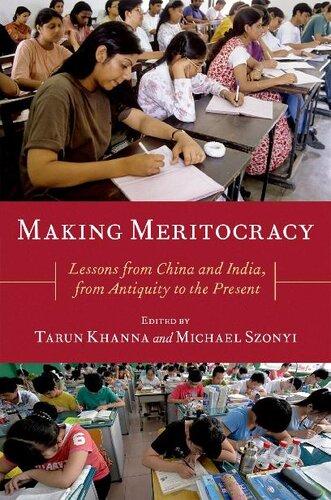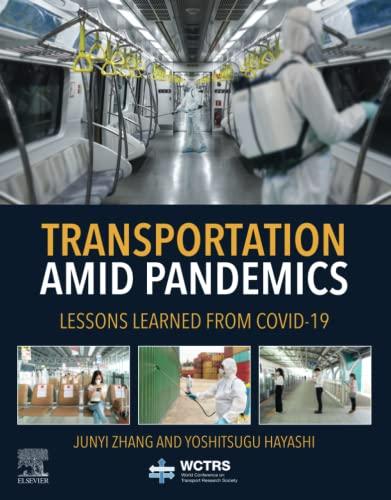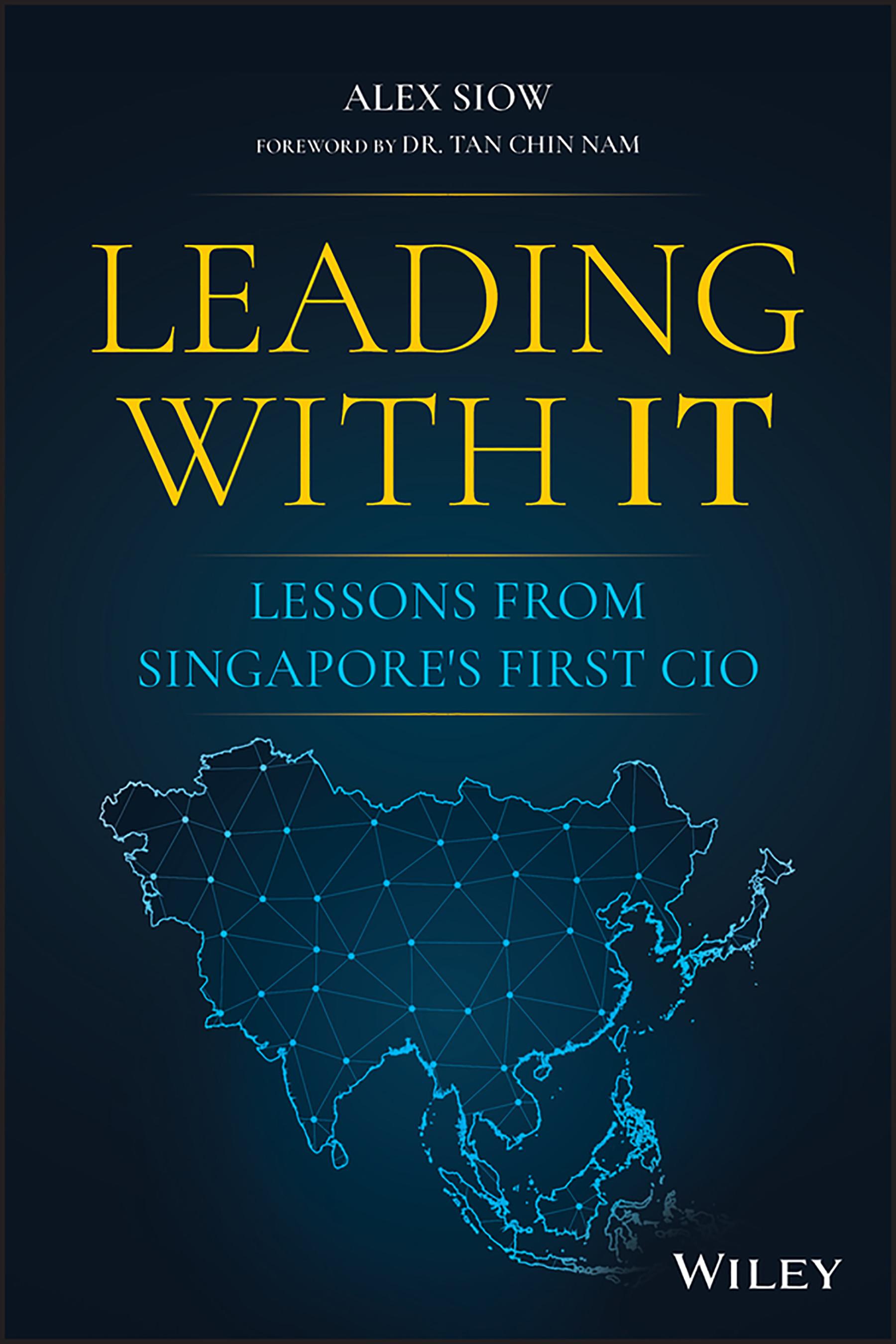Leading with IT: Lessons from Singapore's First CIO Alex Siow
Visit to download the full and correct content document: https://ebookmass.com/product/leading-with-it-lessons-from-singapores-first-cio-alexsiow/
More products digital (pdf, epub, mobi) instant download maybe you interests ...
Get it Done: Surprising Lessons from the Science of Motivation Ayelet Fishbach
https://ebookmass.com/product/get-it-done-surprising-lessonsfrom-the-science-of-motivation-ayelet-fishbach/
Data Science from Scratch: First Principles with Python 2nd Edition
https://ebookmass.com/product/data-science-from-scratch-firstprinciples-with-python-2nd-edition/
Non-Propositional Intentionality First Edition. Edition Alex Grzankowski
https://ebookmass.com/product/non-propositional-intentionalityfirst-edition-edition-alex-grzankowski/
Leading with AI and Analytics Eric Anderson
https://ebookmass.com/product/leading-with-ai-and-analytics-ericanderson/
Insect Behavior: From Mechanisms to Ecological and Evolutionary Consequences First Edition, Impression 1.
Edition Alex Córdoba-Aguilar
https://ebookmass.com/product/insect-behavior-from-mechanisms-toecological-and-evolutionary-consequences-first-editionimpression-1-edition-alex-cordoba-aguilar/
Learning From the Best: Lessons Award-Winning Superintendents 1st
https://ebookmass.com/product/learning-from-the-best-lessonsaward-winning-superintendents-1st/
It
Came From the Sky Chelsea Sedoti
https://ebookmass.com/product/it-came-from-the-sky-chelseasedoti/
Making Meritocracy: Lessons from China and India, from Antiquity to the Present Tarun Khanna
https://ebookmass.com/product/making-meritocracy-lessons-fromchina-and-india-from-antiquity-to-the-present-tarun-khanna/
Transportation Amid Pandemics: Lessons Learned from COVID-19 Junyi Zhang
https://ebookmass.com/product/transportation-amid-pandemicslessons-learned-from-covid-19-junyi-zhang/
Additional Praise for Leading with IT: Lessons from Singapore’s First CIO
“Alex has the battle scars from his digital journey, starting from an era of mainframe computing to the current situation where everyone is connected and (almost) everything can be achieved digitally. It is great to have him share his experience and insights in a candid and humble manner.”
– Saw Ken Wye, CEO, CrimsonLogic
“The only constant is change. Without change, an organisation will be made obsolete in a rapidly-evolving ecosystem. Alex Siow’s book addresses the challenges and strategies in change management. The lessons in the book are based on experience and are therefore practical and transcend theories. Although the narratives are IT-related, anyone involved in change management can benefit from the examples cited. This book is now part of my reference sources, as all of my roles involve managing change.”
– Gerard Ee, Chairman, Agency for Integrated Care
“Digitalisation has become a crucial driver of competitiveness and survival for organisations. This book is, therefore, an essential read for the C-Suite so that they understand how ICT can transform their organisations – and how leaders can leverage digitalisation to serve their stakeholders better.”
– Peter Lam, Principal and CEO, Temasek Polytechnic
“Alex Siow has made such a significant impact on the IT industry and the organisations he has served through his visionary, practical, unassuming, and humorous style of leadership. This book reflects Alex’s practical nature of combining stories of his experience and the learnings gleaned from them. A worthwhile read indeed.”
– Dr. Chong Yoke Sin, President, Singapore Computer Society
“It is always pleasant and enlightening when having discussions with Alex Siow. He has vast experience in IT across various roles as a seasoned practitioner and the first CIO in Singapore. Drawing on his lifetime of experience and practices, he offers today’s IT leaders a practical roadmap to building an effective digital organisation to face the new challenges arising from the unprecedented rate of change in the world.”
– Leong Chin Yew, Group Director (Retired), Information Systems, HDB
“This is a must-read book for all budding CIOs in Singapore. It portrays the journey of a young civil engineer into the world of IT who becomes Singapore’s first CIO. Alex is Singapore’s pioneering IT leader who has shaped the CIO profession and has been instrumental for the growth and development of the IT community in Singapore with his leadership in ITMA and the SCS. This is a practical field book for the practitioner CIO.”
–
Yap Chee Yuen, Group CIO, Surbana-Jurong
“I have known Alex since his days as a CIO at HDB during the 1990s. He was instrumental in shaping the role of a ‘CIO’ when the term was at a very nascent stage. Fast-forward to today, and Alex is still very active in shaping the new expectations of a modern-day CIO. Changing mindsets, business models, agility, and resilience are hallmarks of the new IT. The pandemic has accelerated digital transformation efforts and CIOs are at the forefront of this digital revolution. CIOs must recognise that with this new-found power comes great responsibilities. This book is an essential guide for both existing and budding CIOs who wish to make an impact not only in the backroom operations, but also in the business.”
– P. Ramakrishna, CEO, CIO Academy Asia
“Alex Siow is a well-respected pioneer and veteran of Singapore’s IT Industry. His journey is rich with experiential stories – from having tackled mainframe computing to the current ubiquitous digital world. The book contains great insights and offers very practical tips.”
– Siew Yim Cheng, Chief Digital Officer, ComfortDelGro
ALEX SIOW
Copyright © 2021 by John Wiley & Sons, Inc. All rights reserved.
Published by John Wiley & Sons, Inc., Hoboken, New Jersey.
Published simultaneously in Canada.
No part of this publication may be reproduced, stored in a retrieval system, or transmitted in any form or by any means, electronic, mechanical, photocopying, recording, scanning, or otherwise, except as permitted under Section 107 or 108 of the 1976 United States Copyright Act, without either the prior written permission of the Publisher, or authorization through payment of the appropriate per-copy fee to the Copyright Clearance Center, Inc., 222 Rosewood Drive, Danvers, MA 01923, (978) 750-8400, fax (978) 646-8600, or on the Web at www.copyright.com. Requests to the Publisher for permission should be addressed to the Permissions Department, John Wiley & Sons, Inc., 111 River Street, Hoboken, NJ 07030, (201) 748-6011, fax (201) 748-6008, or online at www.wiley.com/go/permissions.
Limit of Liability/Disclaimer of Warranty: While the publisher and author have used their best efforts in preparing this book, they make no representations or warranties with respect to the accuracy or completeness of the contents of this book and specifically disclaim any implied warranties of merchantability or fitness for a particular purpose. No warranty may be created or extended by sales representatives or written sales materials. The advice and strategies contained herein may not be suitable for your situation. You should consult with a professional where appropriate. Neither the publisher nor author shall be liable for any loss of profit or any other commercial damages, including but not limited to special, incidental, consequential, or other damages.
For general information on our other products and services or for technical support, please contact our Customer Care Department within the United States at (800) 7622974, outside the United States at (317) 572-3993, or fax (317) 572-4002.
Wiley publishes in a variety of print and electronic formats and by print-on-demand. Some material included with standard print versions of this book may not be included in e-books or in print-on-demand. If this book refers to media such as a CD or DVD that is not included in the version you purchased, you may download this material at http://booksupport.wiley.com. For more information about Wiley products, visit www.wiley.com.
Library of Congress Cataloging-in-Publication Data is Available:
ISBN 9781119797401 (cloth)
ISBN 9781119797418 (ePDF)
ISBN 9781119797425 (ePub)
Cover image: © M Four Studio/Shutterstock
Cover design: Wiley
10 9 8 7 6 5 4 3 2 1
Dedicated to cancer researchers worldwide. (Cancer claimed my parents, wife, and cousin.)
Foreword
Tan Chin Nam
IWAS GLAD WHEN ONE of my close friends, Alex Siow, asked me if I would write the Foreword to his book, Leading with IT: Lessons from Singapore’s First CIO. I first met Alex in 1980 when he came for an interview for an open position in the Systems and Computer Organisation (S&C) at the Ministry of Defence.
Alex had just returned from Germany after completing his engineering degree. He still had to complete his national service stint in the army. I interviewed Alex and a few others. He turned down the offer to join S&C and said he wanted to be a structural engineer in the Housing and Development Board (HDB).
But fate played its hand, and Alex switched his career from engineering to IT in a few years. We kept in touch with each other, and Alex was invited to join as a member of the board at the National Computer Board (NCB) Society in 1998.
When I read through the chapters in Alex’s book, I found a strange déjà vu; to some extent, the learnings from his book reflected mine, even though our career trajectories have been very different.
Leadership is about creating purpose and meaning in work and life, and aligning people to achieve greater things together for the organisation or the benefit of society. I was fortunate and honoured to have been given many opportunities to create, reposition or transform organisations in the Singapore Civil Service, where I spent 33 years serving the nation. Alex, likewise, evolved into a worthy leader, working in HDB and StarHub, and leading organisations like the Singapore Computer Society (SCS), the IT Management Association (ITMA), and others.
I started my career in the public sector as a systems engineer in the Ministry of Defence, applying modern management approaches in solving complex problems, including computerising the ministry. This paved the way for my active involvement in the national computerisation effort, which led to the formation of the NCB. Throughout this journey, I observed that everyone is in a position to make a difference, irrespective of the level of responsibilities. Alex, likewise, honed his leadership skills as he climbed the corporate ladder.
The NCB was set up in 1981 with the vision to drive Singapore into the Information Age with a series of national IT plans to follow. That was motivational for the staff. They found this national-level movement meaningful and engaging and were equally inspired by the 3P philosophy of professionalism, partnership, and people. The “NCBians” were emotionally connected with their work and users; Alex, in performing his chief information officer (CIO) role, reflected this philosophy fully.
When I was appointed permanent secretary of the Ministry of Labour, some colleagues offered their sympathy, suggesting that managing work permits for domestic helpers and construction workers could not be very exciting. But with the Manpower 21 Plan, the ministry was repurposed as the Ministry of Manpower (MOM) with the vision to make Singapore a talent capital in the knowledge economy.
This involved re-looking at human resources as capital for the country’s knowledge, innovation, emotional well-being, and social relations. Efforts were underway to cultivate an engaged workforce, including transforming the workplace into one in which staff can have an emotional connection. Naturally, this mission riding on the strong foundation of the Labour Ministry, was a big boost for the motivation and morale of MOM staff.
That was akin to Alex being asked to head the Computer Services Department (CSD) at the HDB and the subsequent issues he had to deal with, totally unprepared. But he rose to the challenge, transforming the CSD – and thereby the way IT was perceived in the HDB – which eventually made him Singapore’s first CIO. It’s a journey of grit and confidence, and the ability to motivate a team to work as one.
I was directly involved overseeing the various versions of the National IT Plan from the beginning with the exception of the very last version. The evolution of the National Computerisation Programme (1980) into National IT Plan (1986), IT 2000-Intelligent Island (1991), Infocomm 21 (2000), Connected Singapore (2003), Intelligent Nation 2015 (2006), and
finally Infocomm Media 2025 (2019) paralleled the development of infocommunications technology (ICT) and digital media technologies in the world.
It was an exciting journey and I could sense the zealous efforts of all those who were involved in this partnership between the public, private, and people sectors in our concerted national transformation for economic competitiveness, better quality of life, and a better tomorrow. Successive leaderships have been able to achieve good alignment in this purpose-driven national undertaking, which had been the highlight of my journey in the public sector.
We had a very humble beginning with meagre IT manpower of 850. Today, at 220,000 strong, our IT talent pool is providing an accelerated thrust to launch Singapore into the digital economy with a bright future for all. Our vision and aspirations of successive IT plans, and now with an overlay of Singapore as a Smart Nation in the transforming global economy, are being realised. Chief information officers, chief digital officers, and IT professionals can expect even more challenging and fulfilling times ahead.
This book is essential reading for anyone who aspires to lead, whether in the ICT industry or elsewhere. After all, all industries are ICT industries today; no business can survive without ICT. This book contains important lessons – and examples – in vital areas such as innovation and change management, motivation, and mentoring, and the future of work and money.
Leadership is a journey with its ups and downs. What sustained me in difficult times was my personal motto – to be a useful person and to make tomorrow better than today. It is a journey about making a more significant difference in what we do. For Alex, it was about respecting others, never looking down on others, and treating others, whether employee or vendor, fairly.
The final point: When the going gets tough, think of the meaning of your job, and work creatively and collaboratively to make it more meaningful. Every one of you is a leader in your own way. There is no need to wait for a CEO or a leadership position before you make a meaningful difference. After all, we are the stewards of functions entrusted to us by our destiny – a privilege – and ultimately, it is about making tomorrow better for our children and our grandchildren.
Dr Tan Chin Nam retired from the Singapore Administrative Service in 2007 after 33 years. Since 2008, he has been a senior corporate adviser, serving on various boards and advising companies. He has held top management positions, including Chairman of the National Computer Board; Managing Director of the Economic Development Board; CEO of the Singapore Tourism Board; Chairman of the Media Development Authority; Chairman of the National Library Board; Permanent Secretary of Singapore’s Ministry of Manpower; and Permanent Secretary of the Ministry of Information, Communications, and the Arts. He is a Fellow of the Institution of Engineers, Singapore; Fellow Member of the Singapore Institute of Directors; Honorary Fellow of the Singapore Computer Society, and Distinguished Fellow of the EDB Society.
Preface: How to Handle Herculean Tasks
EVER SINCE THE ROLE of CIO (chief information officer) began to become commonplace in the IT industry as well as in IT user organisations, it was subject to snide remarks, the key one being “Career Is Over.” That’s because the typical CIO needs to be multihatted: technocrat, businessperson, cheerleader, and as the custodian of the ITD (IT Department) finances. Some have even likened the duties and tasks of a CIO to the Twelve Labours of Hercules.
Who was Hercules? Most people would have some idea of Hercules from the many Hollywood films since 1957 that dramatized the heroic exploits of Hercules. The movies portray Hercules as a Roman hero. However, not many would know that the Roman hero’s real name was Heracles and that his country of birth was Ancient Greece, not Ancient Rome.
According to Greek mythology, Heracles was the son of Zeus (King of the Gods) and Alcmene (granddaughter of Perseus). King Zeus had sworn that the next son born in the Perseid House should become Ruler of Greece. However, due to a trick played by Zeus’ jealous wife, Hera, it was not Heracles but another child, the sickly Eurystheus, who was born first and became heir. When Heracles turned 18, he had to serve King Eurystheus and also suffer the vengeful persecution of Hera.
How did the Twelve Labours of Hercules come about? According to an epic Greek poem written in 600 bc by Peisander, in a fit of rage and madness induced by Hera, Heracles killed his wife and children. He then prayed to the God Apollo for guidance and went to the Oracle at Delphi. The Oracle told Heracles to serve his half-brother (and the King of Mycenae), Eurystheus, for 10 years. During that time, he had to perform 12 difficult feats, called “Labours”. After completing his tasks, Heracles became a hero in the Greco-Roman world for his combination of physical strength, ingenuity, and bravery.
What’s the connection with ICT? After joining the IT profession, I was often warned by friends and colleagues that developing large and complex ICT systems was a Herculean task. Considering what Hercules had gone through, I thought that they might have been exaggerating. But when I started to gain more experience and knowledge, I realised that there were indeed reasons to compare the rigours of systems development with the Labours of Hercules, albeit on a different scale.
To solve every problem, Heracles had to rely on hard skills, such as physical strength and stamina – and soft skills, such as bravery, ingenuity, and teamwork. Similarly, in the large, complex, and rapidly changing world of ICT systems, CIOs have to turn into Heracles almost daily and employ technical knowledge (hard skills) as well as problem-solving and teamwork (soft skills) to be successful.
Let us take a look at the analogy between the Twelve Labours of Heracles and the 12 skillsets of a CIO.
NEMEAN LION
■ Heracles’ Labour: Get the skin of the feared Nemean Lion. When Heracles found the Nemean Lion and shot arrows at it, they bounced harmlessly off the creature’s impenetrable golden fur. When the lion returned to its cave, Heracles blocked one of its two entrances and entered through the other. He stunned the beast with his club. Using his immense strength, Heracles then strangled it to death. He attempted to skin the lion with a knife from his belt, but the blade was not sharp enough. He sharpened it on a stone and even tried to skin the lion with the rock, in vain. Athena, noticing his plight, told him to use one of Lion’s claws to skin the pelt; that worked.
■ ICT Analogy: Keep the lights on. The ICT environment is as complex as the Nemean Lion. The ITD supports many mission-critical apps that help run the business. The CIO needs to “keep the lights on” first, which is to ensure that all routine functions are working well, and then resolve complex issues such as carrying out a major systems upgrade or shut down critical systems for a major software patch. Like the Nemean Lion’s ferociousness, IT has to be ferociously alert.
The Nemean Lion’s skin is akin to the high availability and quality cloak of the IT environment. The sharp claws of the lion are equal to the defences
that the ITD has to maintain to protect the company from attacks, including malware, DDOS (distributed denial of service), or ransomware. Even when such complex tasks are in process, the CIO’s first key performance indicator (KPI) is to “keep the lights on” so that the company can continue to function.
LERNAEAN HYDRA
■ Heracles’ Labour: Slay the Lernaean Hydra. The Lernaean Hydra was raised by Hera just to kill Heracles. When Heracles cut off one of the hydra’s heads, two others grew back in its place. To add to this complication, one of the hydra’s heads – the middle one – was immortal. Heracles turned to his nephew Iolaus for help. Iolaus came up with the idea (possibly inspired by Athena) of using a firebrand to scorch the hydra’s neck stumps after each decapitation. Heracles cut off each head; Iolaus cauterised the open stumps, thereby killing the Lernaean Hydra.
■ ICT Analogy: Find the root cause of problems. The ICT environment is composed of many technologies, often from different vendors. The ITD’s technical resources similarly come from multiple sources. When these diverse systems and technologies are not synchronised, it can result in a hydra-headed monster of solutions trying to work together, and sometimes crashing. The CIO and the ITD team may try to fix one problem (cut off one head), and two issues may crop up, much like the Lernaean Hydra.
To address these myriad heads of the hydra, the CIO cannot just slice off one head; that would be like fixing a temporary patch or asking IT vendors to solve a specific problem without realising how it may impact other systems. As CIO, you need to identify the root causes, the base issues, and maybe even engage independent external expertise to troubleshoot and resolve tough technical problems. If you don’t find the root cause of the problems and get them fixed, the heads of the hydra will reappear.
CERYNEIAN HIND
■ Heracles’ Labour: Capture the Ceryneian Hind. The Ceryneian Hind was a giant female deer, which lived in the region of Keryneia. It was sacred to the Hunting Goddess, Artemis. Although female, it had male-like antlers, which were made of gold, while its hooves were bronze. It could
outrun a flying arrow. Heracles awoke from sleep and saw the hind by the glint of sunlight on its antlers. Heracles chased the hind on foot for a full year through Greece, Thrace, Istria, and the Hyperboreans. In some versions, he captured the hind while it slept, rendering it lame with a trap net.
■ ICT Analogy. Persistence pays. It took Heracles a year to capture the Ceryneian Hind. Heracles had to chase the creature across multiple geographies; he had to persist in getting to this goal. Likewise, in the ICT space, some projects will take longer to mature, will require teams to jump through technical hoops, often coming close to “throwing in the towel” and going back to status quo ante. For example, many projects involving big data analytics, AI and DX (digital transformation) are tough to do, require long periods of testing and fine-tuning, and need the persistence of the entire ITD as well as the organisation.
As CIO, you have to be the cheerleader of your team. You have to get them to carry on the tasks, no matter how challenging, until you reach the goal. You can, of course, take help from external parties, vendors, consultants, SMEs (subject matter experts). Your team will otherwise give up. You as CIO have to persist with the plan, and get your team not to lose hope.
ERYMANTHIAN BOAR
■ Heracles’ Labour: Bring the Erymanthian Boar. This task was to bring the Erymanthian Boar back alive to King Eurystheus. A boar is a huge, wild, fierce pig with tusks growing out of its mouth. The Erymanthian Boar lived on the Erymanthus mountain. Every day it would come crashing down from its lair, attacking people and animals all over the land, gouging them with its tusks, and destroying everything in its path. Heracles had visited Chiron for advice on how to catch the creature. Chiron told him to drive it into thick snow during winter. Heracles caught the boar, bound it, and carried it to King Eurystheus, who was scared of the beast and fled into his half-buried storage, called Pithos, and begged Heracles to get rid of the creature.
■ ICT Analogy. Negotiate and seek expert advice. Heracles was not shy to seek advice or external expertise. The CIO would likewise be required to introduce new technology or solutions and might have no knowledge or talent in-house to get it done. Don’t be shy to ask for advice, either from your vendors, industry bodies, or consulting companies.
Capturing the wild Erymanthian Boar is akin to introducing major IT solutions. IT projects come in waves: mainframes to client/server systems to Y2K migration, to e-commerce and mobile computing. Adopting and implementing these widely differing technologies requires different types of resources and IT talent. The only way to obtain both of these is to negotiate and seek expert advice.
AUGEAN STABLES
■ Heracles’ Labour. Clean the Stables of King Augeas. Getting Heracles to clean the stables of King Augeas was designed to be very humiliating (rather than impressive, as the previous tasks had been) and impossible, since the livestock was gifted with divine health (and immortality) and therefore produced an enormous quantity of dung. For more than 30 years, nobody had cleaned the Augean Stables, and more than a thousand cattle lived there. Heracles successfully rerouted two massive rivers, Alpheus and Peneus, to wash out the filth and clean the stables of King Augeas.
■ ICT Analogy. Think outside the box. There was no feasible way to clean the dung that had accumulated for 30 years. If Heracles had not “thought out of the box” and managed to divert the paths of two major rivers, the dung would keep accumulating. Cleaning it piecemeal would complicate the issue, not solve it.
In an implementation of ERP (enterprise resource planning), the first in Asia, I faced a major dilemma: how to handle a new, central, enterprisewide technology solution within budget and with the Y2K issue staring us in the face. I had to think out of the box. We proposed a plan, we asked for vendor time, expertise, and investment, we tweaked the contracts and worked together with multiple and diverse teams to get the ERP done on time and budget – and were Y2K compliant.
STYMPHALIAN BIRDS
■ Heracles’ Labour. Defeat the Stymphalian Birds. These were man-eating birds with beaks made of bronze and sharp metallic feathers that could tear apart their victims. The birds were sacred to the god of war, Ares. Their dung was also highly toxic. Heracles could not wade too far into
the swamp, for it would not support his massive weight. Athena noticed his plight and gave Heracles a rattle, which Hephaestus had made for an occasion like this. Heracles shook the loud rattle and frightened the birds. When they tried to fly away, Heracles shot a bunch of them with his arrows. The rest of the flock flew far away, never to return.
■ ICT Analogy. Break down the problem. Heracles had a complex problem to solve, with multiple moving parts. He had to break down the problem into smaller components and solve each first, before going for the “big kill”. That’s also true in the ICT environment. Sometimes a problem looks huge, and it could be huge, such as a significant DDOS or ransomware attack. You can’t solve it in one go. You must break it down into smaller components and fix each small issue first before you can go after that big mountain.
Take one example: a significant system slowdown. That could be due to legacy applications, or massive loading on the servers, or inadequate storage, or some servers not functioning, or malware in an application, or a dozen other reasons. Sometimes it’s a mixture of multiple reasons. When the IT landscape is vast, the natural tendency is to leave it alone, as any change may create a disruption. As the CIO, you must have a bird’s-eye view of your ITD systems and narrow down the possible causes of the problem. It could be something simple, like adding additional storage during month-end to handle the load.
CRETAN BULL
■ Heracles’ Labour. Capture the Cretan Bull. The Cretan Bull had been wreaking havoc on Crete by uprooting crops and breaking down orchard walls. Heracles sneaked up behind the bull and used his hands to throttle it; he did not kill it. The hero then shipped it back to King Eurystheus, who got so scared of the creature that the King stayed hidden in the Pithos dungeon. He wanted to sacrifice the Cretan Bull to Hera, who hated Heracles. She refused the sacrifice because it would reflect glory on Heracles. The Cretan Bull was tamed and released; it wandered into the city of Marathon and was then known as the Marathonian Bull.
■ ICT Analogy. Nip the problem in the bud. Heracles knew that he had to nip the problem (the destructive bull) before it continued to do more damage. If he waited too long, the problem would be compounded and get
out of control. But once the problem got resolved and the issues straightened out, there was no need to keep the bull captive, for it could not do any more damage. So it was released and allowed to wander wherever it wished.
For the CIO, problems may occur from many quarters. Key talent is resigning, or some specific software is slowing down other systems, or a piece of malware that has infected one application and might infect the whole ITD if not nipped in the bud right away. The CIO has to take charge immediately and instruct his team to resolve the issue (not patch it) as soon as possible. Letting a problem carry on – hoping it will resolve by itself – could be a fatal error of judgement.
MARES OF DIOMEDES
■ Heracles’ Labour. Steal the Mares from Diomedes. The Mad Mares of Diomedes were four horses that ate humans. They belonged to a giant named Diomedes, King of Thrace, son of Ares and Cyrene. The names of the mares were Podargos (swift), Lampon (shining), Xanthos (yellow), and Deinos (terrible). Some versions of the myth mention that the mares also exhaled fire. Heracles brought several volunteers to help him capture the giant horses. After decimating Diomedes’ men, Heracles broke the chains that tethered the horses and drove the mares out into the sea.
■ ICT Analogy. Get teams to collaborate. Heracles enlisted volunteers to help out with a pesky problem; the volunteers decided to chip in for three reasons: One, the Mad Mares were causing issues across the city that affected everyone. Two, it was apparent that the volunteers by themselves could not tackle the Mad Mares. Three, they believed in the leadership skills of Heracles to lead them to victory.
Those three points are precisely similar to issues that most organisations face in dealing with complex ICT problems, which are akin to the mares that impact all stakeholders. The ITD by itself cannot handle all of the issues because it may have roots in other business units (BUs), such as finance, sales, marketing, and logistics. You, the CIO, have to become Heracles, the leader, and get teams from all specific BUs to collaborate to solve ICT problems. Most often teams work in silos; the CIO has to get them to collaborate and work in diverse groups to “fight the Mad Mares of ICT”.
HIPPOLYTA’S BELT
■ Heracles’ Labour. Procure the Belt of Hippolyta. King Eurystheus’ daughter, Admete, wanted the Belt of Hippolyta. Hippolyta was the Amazonian queen who possessed a magical waist belt that she received from her father Ares, the God of War. The myth mentions that Hippolyta was impressed with Heracles and his exploits, and agreed to gift him the belt. However, Hera disguised herself and walked among the Amazonians, sowing seeds of distrust. She claimed that strangers were plotting to kidnap the Queen of the Amazons. Alarmed, the women rode off on their horses to confront Heracles. When Heracles saw the herd, he mistakenly thought Hippolyta had been plotting such treachery all along. He killed her, grabbed the belt and returned to Eurystheus.
■ ICT Analogy. Beware of saboteurs. This episode offers insights into saboteurs as well as the earliest example of fake news. Saboteurs can be external or internal to the organisation, or even within teams. The CIO has to navigate these waters using soft skills (negotiations, persuasion, teamwork) and hard skills (get tough on saboteurs, negative thinkers, fake news spreaders, gossipers, and others).
Other than being measured on the management of the IT team, the CIO’s credentials depend on their success in delivering major projects. Projects can be new implementations or upgrading of existing systems. Often, the project teams comprise a diverse mix of IT staff, vendors, and critical users. The success of the project depends on team members being able to work together within and outside their teams. Identify saboteurs early and find solutions to overcome problems.
CATTLE OF GERYON
■ Heracles’ Labour. Grab the cattle from Geryon. The task was to get the cattle from Geryon. Geryon was a three-bodied, four-winged giant who lived on the island of Erytheia. He possessed a fabulous herd of cattle whose coats were stained red by the light of the sunset. Heracles drove the cattle over the Aventine Hill to the future site of the City of Rome. A giant called Cacus lived there; he stole some of the cattle as Heracles slept. Cacus did this by making the cattle walk backwards, so they left no trail. When Heracles drove his remaining cattle past the cave, where Cacus had hidden
the stolen animals, they began calling out to each other. In another version, Cacus’ sister Caca told Heracles where he was. Heracles killed Cacus and set up an altar on the spot; this spot would later be the site of Rome’s “Forum Boarium” (the cattle market).
■ ICT Analogy. Watch out for hidden agendas. This episode illustrates the need for the CIO to keep an eye out for the hidden agendas of others, who may either be part of the ITD or even from other BUs. Usually, those with hidden agendas cloak their real intent behind credible curtains and may appear to have the well-being of the organisation at heart. Much like Cacus making the cattle walk back, they didn’t leave any trail on their path.
It is challenging for the CIO to figure out everybody’s real intent, especially since there are multiple parties and stakeholders involved, each with his or her perceptions and needs. Running large projects is like managing a herd of cattle; everyone needs to move in the same direction and work as a unified team. It is at such times that hidden agendas crop up. If aligned to the goal of the ITD or the organisation, it’s ideal. If not, it’s time to spot these outliers and deal with them directly.
GOLDEN APPLES OF HESPERIDES
■ Heracles’ Labour. Steal three Golden Apples. The task was to steal three Golden Apples from the Garden of the Hesperides. When Heracles got to the garden, he encountered Atlas who was holding up the heavens on his massive shoulders. Heracles cajoled Atlas to get the three Golden Apples and offered to hold the sky for him. When Atlas returned, he did not want to take the heavens back and offered to deliver the Golden Apples himself. Heracles had to trick him by asking Atlas to hold the sky for a moment while Heracles adjusted his cloak. Atlas agreed. Heracles heaved the heavens back on Atlas’ shoulders and fled with the Golden Apples.
■ ICT Analogy. Transfer ownership. There are two lessons here: One, the need to delegate effectively. The other is to ensure that the right person or team takes responsibility for the task and its outcome. Digitalisation has changed business processes and allowed the BUs to buy software and cloud instances directly, bypassing the ITD and creating what’s called the “Shadow IT Syndrome”. But the support function is dumped on the ITD without allowing the ITD to carry out adequate checks during the purchasing process.
Much like Heracles, who took over the chore for a while and transferred the heavens back to its rightful owner, the ITD must transfer the ownership back to the original BU after implementation. The CIO should involve key stakeholders and BUs early on with a clear understanding that the “Golden Apples” do not belong to the CIO or the ITD, and will revert to the rightful BU.
CERBERUS
■ Heracles’ Labour. Capture Cerberus. The most dangerous task of all was this one: King Eurystheus ordered Heracles to go to the Underworld, called the Kingdom of Hades, and kidnap its guardian, Cerberus. Ancient Greeks believed that when one dies, his or her spirit goes to the Underworld and lives there forever. All souls, whether they were good or evil humans, are destined for the Kingdom of Hades.
Cerberus guarded the entrance to Hades and kept the living from entering the world of the dead. Cerberus was a fearsome creature with three heads of wild dogs, a dragon for a tail, and snakeheads all over his back. After much rigour, Heracles reached Hades. He grasped all three heads of Cerberus at once and wrestled the beast into submission. After a long fight, Hercules captured Cerberus and carried it to Eurystheus, who fled once again to his lair, Pithos. Eurystheus then begged Heracles to return Cerberus to the Underworld, offering in return to release him from any further labours. The story has a happy ending: Cerberus was released back to rule the Kingdom of Hades, and Heracles got released from all future “Labours”.
■ ICT Analogy. Aim for a win-win outcome. The best deals in business, and ITD, are ones where all the parties feel they have contributed to the win individually and collectively. That is ideal, and not as rare as it seems. Key stakeholders should come together in the initial phases and chalk out what success should look like, and how each party can contribute to a successful outcome. It’s then likely that the high level of trust and transparency may lead to everybody getting credit if the project succeeds, or everybody pitching in if the project goes through challenging phases.
On the flip side, Cerberus presents the dark forces of conflict management. In every organisation, there are always boundaries of political turf and the hidden walls of pride. These creep in as false objections, sabotage, fake news, and canvassing others to rebel. The CIO should face each of these stakeholders to address their complaints. The CIO needs charisma, integrity, and humility. The more effectively that you or your team can directly address these objections, the more buy-in you can achieve – and the better will the win-win outcome be for all stakeholders.
